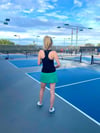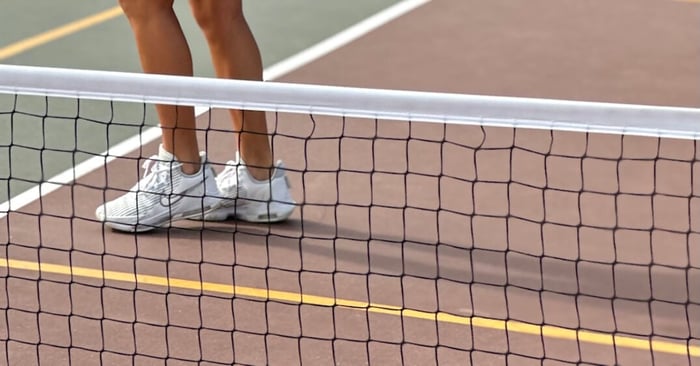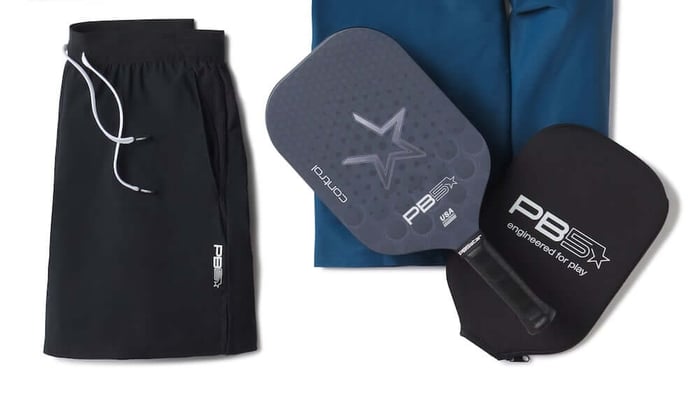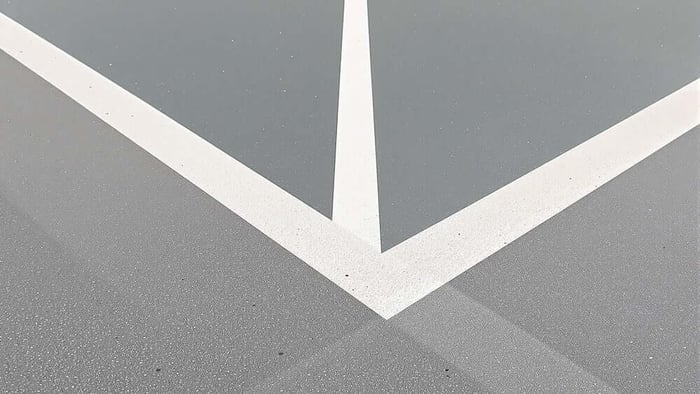Key Takeaways:
Open play pickleball sessions often lack structure and organization, leading to inconsistent playing experiences and potential frustration.
Skill disparity among players in unstructured sessions can result in unbalanced matches, affecting both enjoyment and progress.
Having the right gear can significantly improve your confidence and performance in any playing environment.
You show up excited to play. Paddle in hand, energy high. But after a few chaotic games and long waits, you leave the court feeling more frustrated than fulfilled.
That’s the reality for many players stepping into open play. These unstructured sessions—where players of all levels mix in without a clear system—are common in the pickleball community. But they often come with issues: disorganized rotations, mismatched skill levels, unclear etiquette, and the ever-confusing paddle queue
Even experienced players like Sarah Ansboury have pointed out how these settings can feel unbalanced, especially when skill gaps go unchecked.
Still, the heart of pickleball is community. And with the right mindset—and the right PB5star gear—you can turn even the most unpredictable session into a valuable experience. Explore PB5star and gear up to play your best in any environment.
The challenges of open play in pickleball
Open play is meant to be casual, social, and fun. It brings players of all levels together for pickup games—no signups, no pressure. But the lack of structure can sometimes hold you back. Skill levels can vary widely, leading to unbalanced games that leave beginners overwhelmed and experienced players underwhelmed. Some clubs try to fix this by designating courts by level, but with inconsistent ratings and surprise walk-ins, it’s rarely foolproof.
Then there’s the “paddle queue”—the go-to system for deciding who plays next. It’s simple in theory but often turns into a source of confusion or conflict. Without clear rotations or agreed-upon etiquette, it’s easy for players to miss turns or dominate the court without meaning to. These issues don’t take away from the spirit of pickleball—but they do make it harder to grow your skills.
Let's break down the factors that make open play more challenging than fun:
1. Lack of organized structure
Open play pickleball sessions often run without a formal framework, creating an unpredictable environment that can affect both enjoyment and progress. Without clear guidelines, players may face unclear court access rules and uncertain waiting times. This lack of structure can lead to misunderstandings and may feel unwelcoming—especially for those new to the sport.
The informal setup also results in varied levels of competition, which can be frustrating for players looking to improve. You might face opponents with very different skill levels, leading to unbalanced matches. While this variety can be fun at times, it makes it harder to consistently measure your progress.
What to do: Look for clubs or venues that offer structured play blocks by skill level or organize round-robin formats. If that’s not available, try arriving early to help set expectations with other players or form a group that agrees on fair rotations.
2. Skill disparity among players
One of the most noticeable challenges in open play pickleball is the broad spectrum of abilities you'll encounter on the court. This range of experience levels can lead to uneven matches, potentially affecting your enjoyment and progress in the game. For beginners, facing more seasoned players can be daunting and might test their confidence.
Conversely, advanced players may find themselves yearning for the challenge they need to elevate their game. A recent study found that even when matched by skill level, recreational players showed no significant differences in perceived exertion and enjoyment during games, highlighting the importance of competitive balance for a positive experience.
What to do: To address this variation in player abilities, many pickleball communities are embracing rating systems like DUPR (Dynamic Universal Pickleball Rating) to facilitate more competitive matches. These systems assess players' capabilities and aid in better matchmaking, reducing frustrations caused by significant skill gaps between opponents. However, discussions continue about refining these systems, particularly for newcomers to the sport.
3. Limited opportunities for focused practice
While informal play can be enjoyable, it often lacks the structure needed for targeted skill improvement. Players who rely solely on relaxed sessions may miss out on valuable training opportunities. Here's why structured practice matters:
Here’s why structured practice matters:
Develop specific skills: Drills like the “7-11” help sharpen reflexes, control, and strategy—things you rarely get to practice in casual games.
Build muscle memory: Consistent, targeted training reinforces proper form and technique, making movements feel automatic during matches.
Work on weaknesses: Open play doesn’t allow time to isolate problem areas like footwork or shot consistency. Drills give you space to improve those.
Track progress: Without a practice plan, it’s tough to measure improvement. Structured sessions create benchmarks you can track over time.
What to do: Supplement open play with dedicated practice. Join clinics, schedule drill sessions with a partner, or use solo training tools like ball machines or target zones. Even one focused session a week can make a big difference in how quickly you improve.
4. Potential for negative social dynamics
Open play pickleball sessions, while intended to be inclusive and welcoming, can sometimes foster exclusive social dynamics. Regular players may unintentionally form cliques, creating an atmosphere where newcomers feel left out or pressured to fit in.
This exclusivity can be particularly challenging for less experienced players who might find themselves unofficially segregated to specific courts based on skill level, limiting their opportunities to learn and integrate into the community. These social barriers can obscure the warm, inviting spirit that makes pickleball so special.
What to do: Transform these challenges into opportunities for growth and connection. Implementing a rotating court and partner system is a great start, helping to mix players and create a more dynamic, inclusive environment.
5. Inconsistent game formats
Open play often comes with a rotating mix of game formats. One group might play to 11 points, another to 15 or even 21. Some switch sides halfway through, while others don’t. These inconsistencies can lead to confusion, disrupt the rhythm of play, and throw off your strategy—especially if you’re trying to improve specific aspects of your game.
While the variety can be fun, it also highlights a common request among players: more consistent rules during open play. A shared format would make it easier for everyone to jump in, know what to expect, and focus on playing their best.
What to do: Talk with your local group or organizer about adopting a standard format, like USA Pickleball’s recommended scoring system. Even something as simple as agreeing to play to 11, win by 2, can streamline games and reduce confusion. USA Pickleball's tournament standards can also offer inspiration for bringing more structure to casual play. If no system is in place, a quick check-in before each match can help everyone get on the same page.
6. Overcrowded courts
As pickleball’s popularity surges, so does the challenge of packed courts during open play. While more players means a growing community, it also creates issues that affect the quality of games and the overall experience.
Here’s how overcrowding makes open play more difficult:
Less playtime: Long waits between games—sometimes over an hour—mean less time on the court.
More mismatched games: With more people rotating in, skill levels vary widely, making it harder to find balanced matchups.
Difficult to manage: Rotations and court assignments become harder to enforce fairly without clear systems and cooperation.
What to do: Try attending during off-peak hours when possible. Some venues offer reservation systems, skill-based time slots, or even sign-up boards to improve flow. If your local courts are consistently overcrowded, consider talking to the organizer or city about expanding court access or creating separate sessions by skill level to improve overall playtime and fairness.
7. Limited feedback from peers
Open play rarely offers structured feedback. You might play regularly but struggle to see real progress simply because no one’s pointing out what’s working—or what’s not. Without constructive input, it’s easy to repeat the same mistakes without even realizing it.
The laid-back nature of open play is part of its charm, but it often lacks the coaching or peer support that helps you grow. This can be especially frustrating if you're trying to improve specific aspects of your game.
What to do: Take charge of your development by tracking your own performance. Use a journal or app to log matches, note mistakes, and set small goals. You can also ask a trusted player for occasional feedback or film a few games to spot patterns. Treat every game as a learning opportunity—even without formal coaching.
8. Difficulty tracking progress
Open play can make it tough to measure how much you’re actually improving. The randomness of opponents, game formats, and matchups means there’s little consistency to help you track progress over time. You might feel like your shots are getting better—but without benchmarks, it’s hard to know for sure. This lack of clear indicators can be discouraging, especially if you’re putting in regular time and effort on the court.
What to do: Set personal goals and track them manually—whether its consistency in serves, fewer unforced errors, or winning more net exchanges. Use mobile apps, scorecards, or even short videos of your play to review progress over time. Joining a ladder league or taking part in structured drills can also give you measurable outcomes to build on.
Play the way you think is best
Open play offers a wide range of experiences—some fun, others frustrating. From mismatched skill levels to overcrowded courts, these casual sessions don’t always provide the structure needed for steady progress or consistent enjoyment.
But these challenges don’t mean you have to settle. Look into options that better match your goals, whether that’s joining a skill-based league, scheduling structured practice, or finding a smaller group with similar experience levels. A more focused playing environment can make all the difference in your growth.
And when it comes to preparation, the right gear matters. PB5star’s apparel and gear are built for performance, giving you the comfort, stability, and confidence to play your best—whether you’re in a laid-back open play session or a competitive match. Your pickleball journey is your own. Make it count with smart strategy and gear that supports your game every step of the way.







